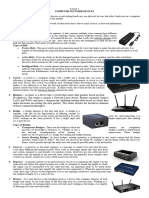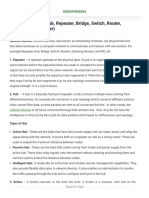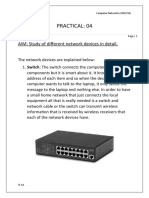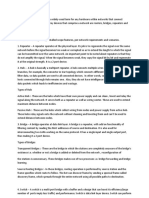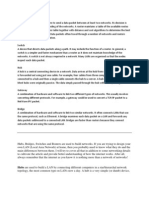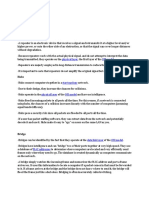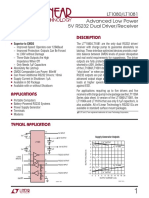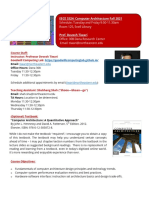Computer Networks 3150710
Practical -1
AIM:- Study of different network devices in detail.
Output:-
1. Repeater – A repeater operates at the physical layer. Its job is to regenerate the signal over the same
network before the signal becomes too weak or corrupted so as to extend the length to which the signal
can be transmitted over the same network. An important point to be noted about repeaters is that they
do not amplify the signal. When the signal becomes weak, they copy the signal bit by bit and regenerate
it at the original strength. It is a 2 port device.
2. Hub – A hub is basically a multiport repeater. A hub connects multiple wires coming from different
branches, for example, the connector in star topology which connects different stations. Hubs cannot
filter data, so data packets are sent to all connected devices. In other words, the collision domain of
all hosts connected through Hub remains one. Also, they do not have the intelligence to find out the best
path for data packets which leads to inefficiencies and wastage.
Types of Hub
Active Hub:- These are the hubs that have their own power supply and can clean, boost, and relay the
signal along with the network. It serves both as a repeater as well as a wiring center. These are used to
extend the maximum distance between nodes.
Passive Hub :- These are the hubs that collect wiring from nodes and power supply from the active hub.
These hubs relay signals onto the network without cleaning and boosting them and can’t be used to extend
the distance between nodes.
Intelligent Hub :- It works like active hubs and includes remote management capabilities. They also
provide flexible data rates to network devices. It also enables an administrator to monitor the traffic
passing through the hub and to configure each port in the hub.
3. Bridge – A bridge operates at the data link layer. A bridge is a repeater, with add on the functionality
of filtering content by reading the MAC addresses of source and destination. It is also used for
interconnecting two LANs working on the same protocol. It has a single input and single output port,
thus making it a 2 port device.
Types of Bridges
Transparent Bridges:- These are the bridge in which the stations are completely unaware of the bridge’s
existence i.e. whether or not a bridge is added or deleted from the network, reconfigurationof the stations
is unnecessary. These bridges make use of two processes i.e. bridge forwarding and bridge learning.
Source Routing Bridges:- In these bridges, routing operation is performed by the source station and the
frame specifies which route to follow. The host can discover the frame by sending a special frame called
the discovery frame, which spreads through the entire network using all possible paths to the destination.
1
� Computer Networks 3150710
4. Switch – A switch is a multiport bridge with a buffer and a design that can boost its efficiency(a large
number of ports imply less traffic) and performance. A switch is a data link layer device. The switch can
perform error checking before forwarding data, which makes it very efficient as it does not forward
packets that have errors and forward good packets selectively to the correct port only. In other words, the
switch divides the collision domain of hosts, but broadcast domain remains the same.
5. Routers – A router is a device like a switch that routes data packets based on their IP addresses. The
router is mainly a Network Layer device. Routers normally connect LANs and WANs together and have
a dynamically updating routing table based on which they make decisions on routing the data packets.
Router divide broadcast domains of hosts connected through it.
6. Gateway – A gateway, as the name suggests, is a passage to connect two networks together that
may work upon different networking models. They basically work as the messenger agents that take data
from one system, interpret it, and transfer it to another system. Gateways are also called protocol
converters and can operate at any network layer. Gateways are generally more complex than switches
or routers. Gateway is also called a protocol converter.
7. Brouter – It is also known as the bridging router is a device that combines features of both bridge and
router. It can work either at the data link layer or a network layer. Working as a router, it is capableof
routing packets across networks, and working as the bridge, it is capable of filtering local area network
traffic.
8. NIC – NIC or network interface card is a network adapter that is used to connect the computer tothe
network. It is installed in the computer to establish a LAN. It has a unique id that is written on the chip,
and it has a connector to connect the cable to it. The cable acts as an interface between the computerand
router or modem. NIC card is a layer 2 device which means that it works on both physicaland data link
layer of the network model.







